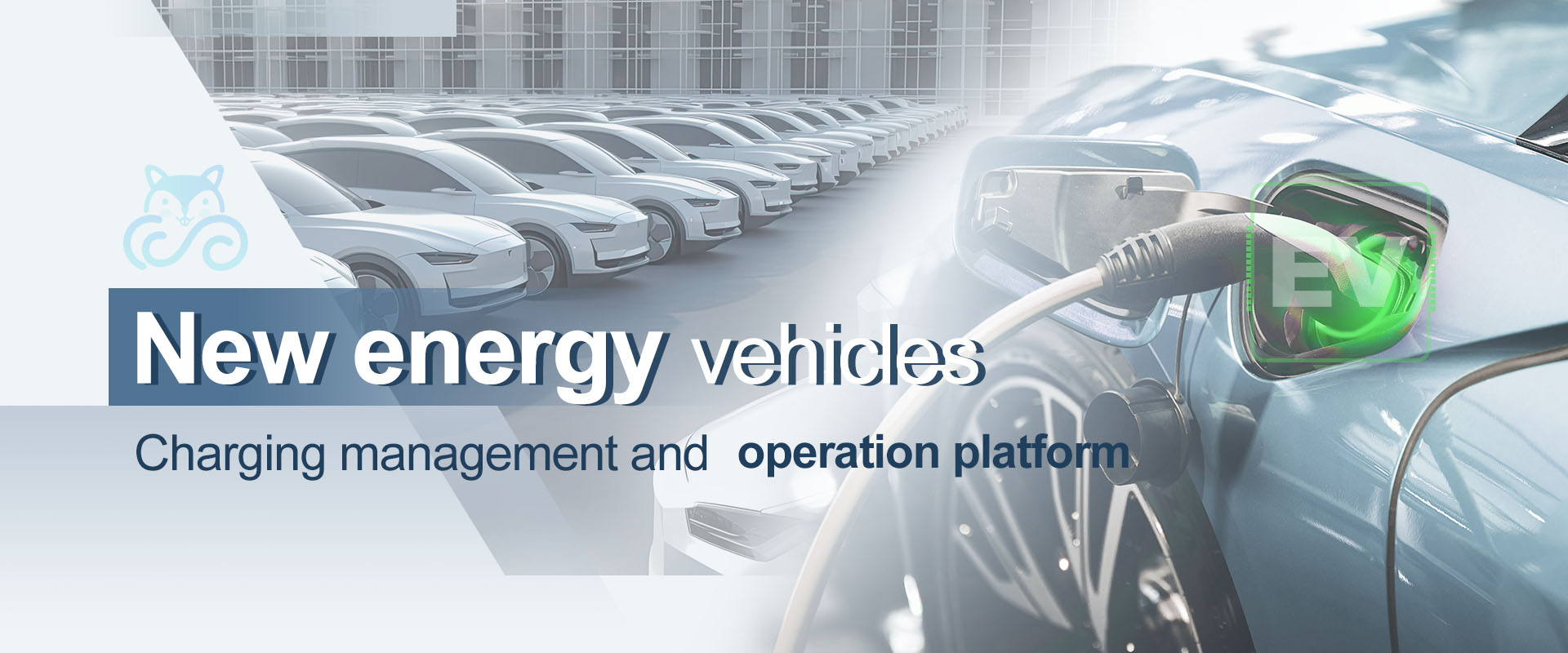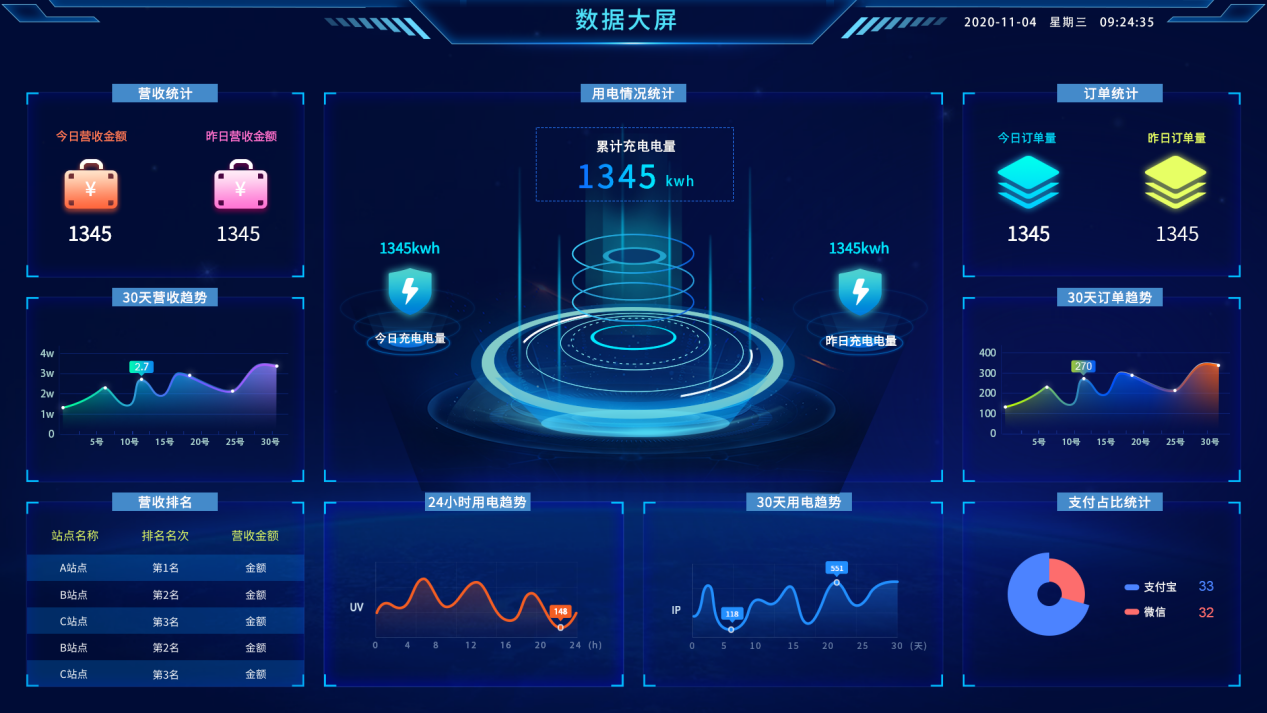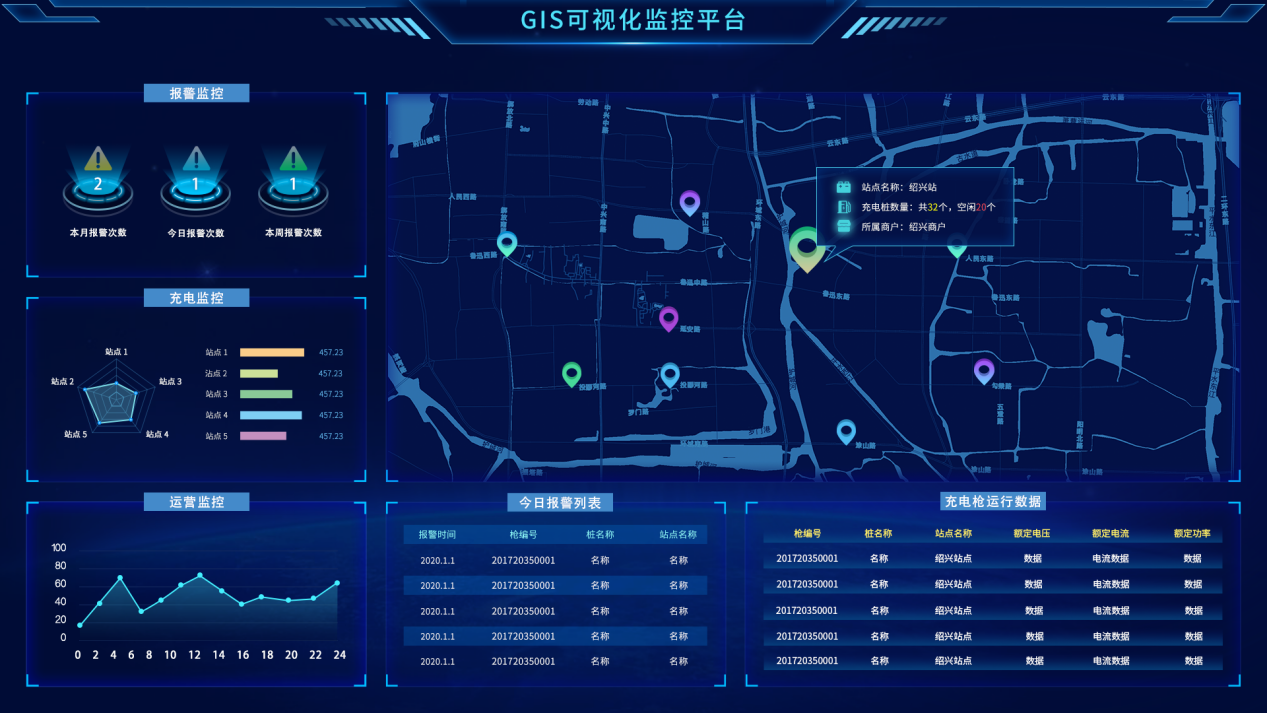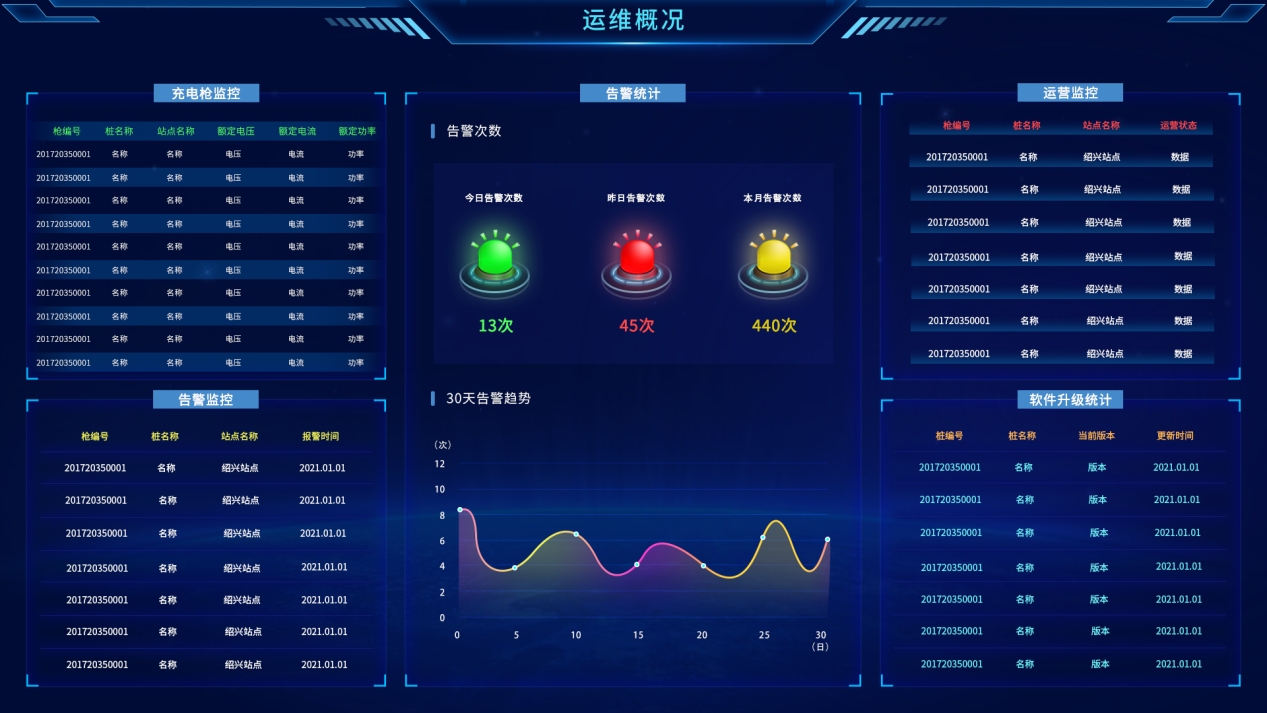The New Energy Charging Station Management System is a service system designed to cater to charging station manufacturers, charging station operators, government and enterprise charging operations, and charging and parking in industrial parks. The system provides various functionalities for charging operations, including site and individual station status monitoring, fault detection, real-time monitoring, operational analysis, marketing strategies, data statistics, revenue billing, financial statistics and inquiries, message reminders, and notifications. The main features include:
1. Resource Center
Merchants can manage charging station resources, such as charging stations, charging piles, charging guns, and other basic data, in a unified and effective manner. This reduces the complexity of construction work, strengthens the overall management of guns, piles, and stations, and controls overall operating costs.
2. Operation Center
The operation center can centrally and effectively manage information about mini-program users, stored value card users, team users, and team vehicles. It streamlines the processing of user-related information and reduces unnecessary operating costs.
(1) VIN Charging
For large-scale charging users like businesses, after the unified management of VIN for business vehicles, vehicles can directly charge for free. At the end of the month, billing can be done to facilitate unified accounting for businesses.
(2) Group Charging
For small businesses, group charging can be created. Users can be added within the group, and they can recharge their electric fees. Users within the group can automatically use group electric fees for deduction during charging.
(3) Stored Value Card Charging
Individual users have diversified charging options. After purchasing a stored value card, users can directly charge and the fee will be automatically deducted after charging is completed, without the need for scanning or other operations.
(4) After-sales Evaluation and Feedback
After-sales evaluation aims to provide charging users with more comprehensive pre-sales, in-sales, and after-sales services. It involves summarizing and managing user feedback and evaluations.
3. Marketing Center
The system can utilize marketing strategies such as "customer acquisition, customer retention, and customer activation" in the operation center to increase users' enthusiasm for using charging services. Based on actual operational conditions, the system can flexibly set up relevant promotional activities and distribute promotional coupons to achieve the desired goals of the operation.
(1) Information Push
Based on market changes, the operation management team can write relevant promotional activities or other articles, which will be pushed to channels such as WeChat official accounts or mini-programs by the system. This aims to improve user satisfaction and increase their motivation to use charging services.
(2) Coupon Distribution
Based on actual holiday or event hotspots, the system can manage promotional activities and coupons, and selectively distribute them to target users. This helps to increase users' enthusiasm for using charging services.
(3) Group Discounts
The system allows for the flexible editing of group discounts at any time.
4. Financial Center
The system can customize the hourly electricity and service fees for each charging station, and provide various types of bills and reconciliation data queries, such as mini-program orders, coupon orders, group orders, VIN orders, stored value card orders, abnormal orders, etc.
(1) Time-of-use Billing
Based on the peak, valley, and off-peak periods of electricity supply, the system customizes reasonable billing strategies for charging stations. The system retrieves the billing strategies from each site to supervise whether they comply with the relevant national electricity pricing standards, thereby avoiding setting unreasonable billing strategies for sites.
(2) Order Reconciliation
Unified and effective management of order details, including charging amount, discount amount, service fee, power usage, charging time, duration, and other data for detailed statistics. This facilitates business reconciliation and settlement, ensuring profitability.
(3) Statistical Analysis
Collecting various operational data from each site, the system generates trend charts for various operations. The charts show the operational status and future trends of the sites in a targeted manner. Based on the chart display, managers can make planning decisions according to actual needs. Statistical analysis charts can be customized according to customer requirements.
5. Operations Center
The system monitors the charging resources at sites, including the charging service process of electric vehicles, the operation of charging stations, the operation of each charging pile at the site, statistical information on alarms, and statistics of maintenance work orders, etc., to comprehensively grasp the operational status of charging stations from multiple perspectives.
(1) Charging Pile Monitoring
The system monitors the real-time operating status of charging piles through communication protocols and intelligent communication interfaces. Once a component failure occurs, the system will automatically raise an alarm and determine the working status of the charging pile, such as powered on, charging, or disabled. It also monitors parameters such as current, voltage, charging mode, etc., to comprehensively diagnose the condition of the charging pile. Parameters that exceed limits will trigger color-change alarms, allowing managers to promptly handle faults.
(2) Charging Station Monitoring
The system real-time monitors the operation of multiple charging piles at a charging station, collects operating data of the charging piles (e.g., charging progress, consumption amount, occupied stalls, etc.), and allows remote upgrades and cessation of charging operations for the piles.
(3) Charging Alarm Monitoring
Monitors abnormal situations that occur during the charging process, records and tracks the exceptions. Various exception records are summarized and centrally processed in the alarm center, including equipment name, IP address, event name, event severity, alarm time, etc., to avoid irreversible losses caused by overlooked situations.
(4) Maintenance Work Orders
The system supports a collaborative mode for maintenance work orders, assisting relevant personnel and resources in the smooth progress of work orders. The system effectively monitors the processing flow of work orders and tracks the processing status of each state work order. It can monitor the overall situation of the operator's maintenance of charging pile faults.
6. Data Visualization Center
The Data Visualization Center consists of three main modules: Operations Data Dashboard, Maintenance Data Dashboard, and GIS Visualization Map. It provides a clear display of important operational and maintenance data for easy access by operations and maintenance personnel. The GIS Visualization Map shows the distribution of charging stations and the number of charging piles and their usage within each station.





